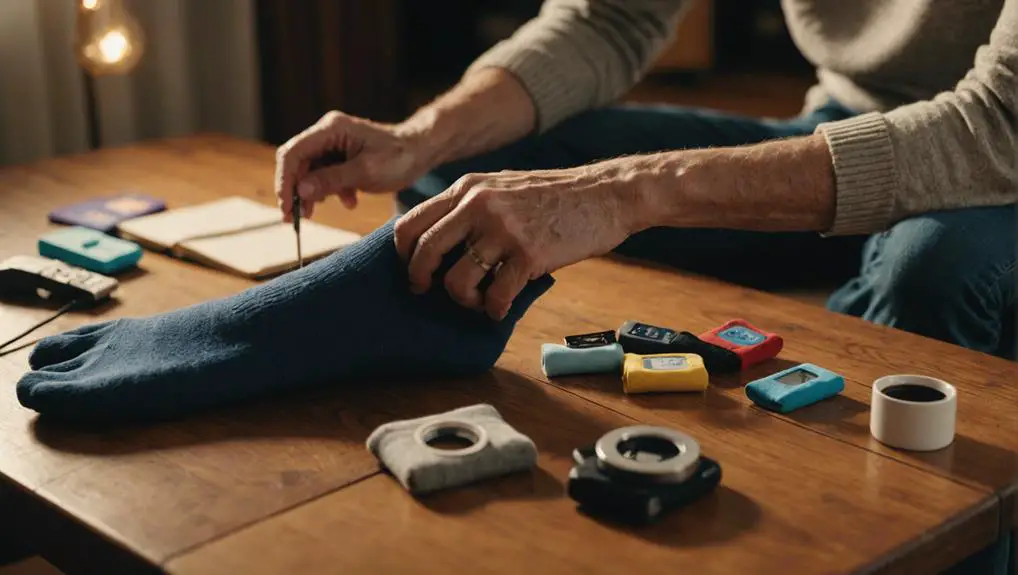What are Types of Blindness? Blindness is a condition in which the eyesight is lost. Unlike weak eyesight, it’s neither treated with glasses nor contact lenses. An individual is entirely blind or has partial blindness.
Completely blind people cannot visualize anything, while partial blindness results in limited vision.
Here is a related article that might interest you on Can Blind From Birth Be Cured?

According to research, approximately 2.2 billion people deal with visual disabilities, but almost half of them are treatable. Patients whose blindness is untreatable should be adequately educated so that they can live their life with this scariest disorder.
About 39 million people have been reported to be completely blind worldwide and more than one million in the United States. In patients whose visual impairments are treatable, the treatment depends upon the cause of blindness.
Visual impairments mean a person cannot correctly distinguish darkness and light even with eyesight glasses, contact lenses, or after using medicine or undergoing surgery. These visual defects may be moderate to severe.
Table of Contents
What Are The Significant Types Of Blindness?
The major three types of blindness are:
- Color blindness.
- Night blindness.
- Snow blindness.
Color blindness is not actual blindness. The color blind patients may have regular eyesight. The individual suffering from color blindness faces problems differentiating between different colors, especially the primary colors, i.e., red, green, and blue. It usually runs in families.
As indicated by the name, night blindness means being unable to visualize things in less illumination. Such patients need bright light to perform their daily routine activities. It is also not complete blindness. Snow blindness refers to the loss of sight when exposed to ultraviolet rays. It causes temporary loss of vision and can be recovered. The patient having this type of blindness is not blind.
What Are The Significant Causes Of Blindness And Their Treatments?
There are many causes of blindness that differs according to socioeconomic conditions. About 96% of blindness cases in the United States result from several eye diseases, and only 4% of cases are due to some injury or trauma.
We will discuss a few most dominant causes of blindness here:
Cataracts:
The leading cause of blindness throughout the world is cataracts. An individual may have cataracts in one eye or both. In a normal eye, the lens focuses the light and simultaneously works with the brain processes the stimulus to the picture.
The standard eye lens is crystal clear, so a clear image is formed, but sometimes few proteins concentration is increased, which causes the eye lens to become cloudy. The cloudy eye lens becomes less transparent and results in blurry vision because it cannot focus the light correctly.

Plus, patients having cataracts in their eyes face difficulty in seeing at night or in dim light. Moreover, they cannot see accurate and detailed colors; to them, colors look faded.
Usually, they are developed in the old age group, but some children are rarely born with them due to congenital disabilities. Smoking, consuming a large amount of alcohol, family history, and air pollution can also contribute to the formation of cataracts.
The position of cataracts may vary; they can be formed at the side, center, or back of the lens in a single eye or both. And if not treated on time, cataracts may lead to blindness.
- Treatment:
If cataracts are not treated timely, they will lead to blindness, but proper treatment in good time will save you from blindness. Ophthalmologists can diagnose cataracts while examining the eye. For early-stage cataracts, no surgery is required; doctors suggest using sunglasses, changing their regular glasses for better vision, using magnifying lenses for reading newspapers, etc.
If the cataracts are bothering your daily routine and are at a stage where simple glasses or sunglasses do not bring favorable outcomes, surgery is performed. The cloudy lens due to cataracts is removed, and an artificial lens is placed into the eye.
The power and size of the lens are carefully examined before the surgery so that the implanted lens fits perfectly with the eye. Approximately 3 million surgeries are successfully performed in the United States each year.
Degeneration of macula with age:
This condition of deterioration of the macula is known as Age-related macular degeneration (AMD). The macula is a part of nerve tissue, the retina. It is 5mm in size and plays a significant role in focused, high-quality vision.
With the passing age, the macula is degenerated, resulting in loss of sharp sight. It is not painful, which is why it remains unnoticed for years. Thus, it takes almost 5 to 10 years when your vision loss starts to impact your daily routine.
Risk factors other than age include excessive smoking, a diet rich in fats, unhealthy living conditions lacking exercise, obesity, etc. Unclear and blurred vision are the early symptoms, followed by difficulty reading in low light and recognizing people from a distance. It may affect one or both eyes. It is a significant cause of vision loss in people with age 60 or more.
AMD (age-related macular degeneration) exists in two primary forms:
1. Dry age-related macular degeneration.
2. Wet age-related macular degeneration.
The former is more common but less progressive with time, while the latter is less common and more progressive and causes a faster loss of vision if it continues untreated.
- Treatment:
For the diagnosis of AMD (age-related macular degeneration), the ophthalmologist put some drops in the eyes of the patient. These drops result in pupil dilation, and thus a clear vision of the eye is obtained.
Afterward, the ophthalmologist will diagnose the type, whether dry age-related macular degeneration or wet age-related macular degeneration. The dry AMD is non-treatable yet, but its progression can be slowed down. But if it reaches a later stage, nothing can save the further loss of sight.
Treatments are available for wet age-related macular degeneration, but there is no guarantee that the disease will stop its progression after the treatment. As in wet AMD, the blood vessels are formed in the macula, which is very thin and is broken down, and blood is leaked, interfering with the normal function. Laser surgery is performed to demolish these vessels.
Another treatment is photodynamic therapy. This therapy injects a drug into the body through the arm. A light of some specific wavelength then activates the drug, which will stop the progression of blood vessels. Plus, some injections are also available that will reduce the development of blood vessels preventing further vision loss.
Glaucoma:
After cataracts, it the primary cause of blindness that cannot be reversed. It is referred to different eye diseases that affect the optic nerve, the principal nerve of the eye. It usually increases the internal pressure of the eye.
The pressure is increased due to over production of fluids in the eye. Its progression is slow, and usually, it remains unnoticed for several years, and if it leads to blindness, it cannot be reversed and cured. A detailed and regular eye examination is needed for its diagnosis. The risk of suffering from glaucoma increases if someone in your family had the disease, some had high intraocular pressure, or you have diabetes.
- Treatment:
Diagnosis at the time and proper treatment can save the loss of vision, which, if not treated, leads to blindness. Medicines and surgeries are available for the treatment of glaucoma. Different eye tests like tonometry, gonioscopy, etc., are carried out to diagnose the disease. If the optic nerve is highly damaged, it cannot be undone.
Another post that will interest you is about How Do Deaf And Blind Learn Braille? What Is Braille?
The treatment only brings the high intraocular pressure to an average level. Several eye drops are recommended by ophthalmologists who will reduce the production of eye fluids or increase the outfall of fluid from the eye.
Moreover, laser treatments and surgeries are also available, which help with the drainage of excess fluid from the eyes.
Many other causes of blindness exist. Ant the treatments are dependent on the cause and condition of the patient. In some cases, if the optic nerve is damaged, the treatment is ineffective, but in others, medicines, eye drops, laser treatments, and surgeries are saving the vision of millions of people all over the world.
Isn’t being blind so scary? So, be careful and take a regular checkup of your eyes.

Hi, my name is Eddie, I am a professional trainer specializing in the elderly population and I’m also a website designer. I love training in the gym, going to the beach, traveling, and having good food.
I combined my love for sport and website designing to make “DisabilitEase” whose purpose is to help elderly and disabled people live a more full and active life, have more fun, and enjoy their unique journey despite any disability.


